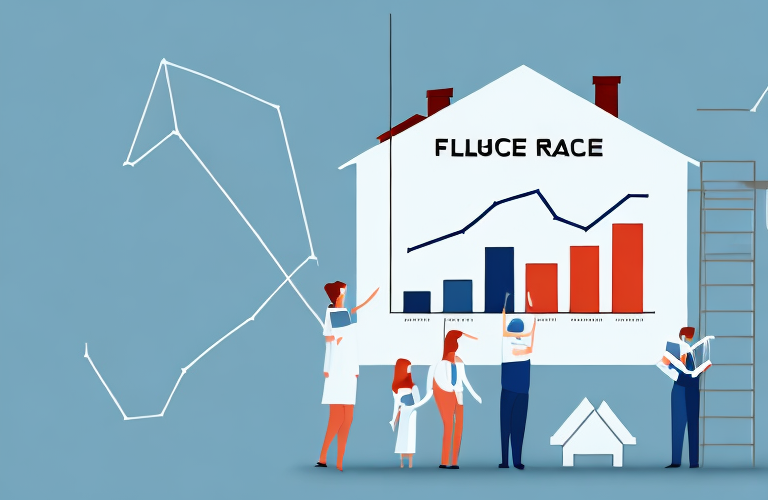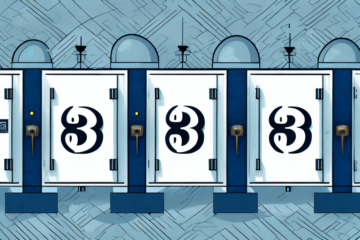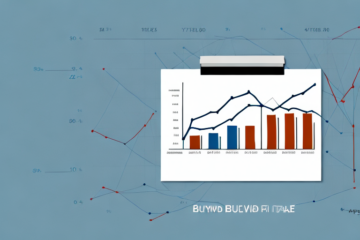Understanding the 3/27 Adjustable-Rate Mortgage (ARM) and Its Financial Implications
Looking for a mortgage isn’t a walk in the park, but it’s an important decision that will ultimately affect your personal finances. One of the options you may come across is the 3/27 adjustable-rate mortgage (ARM). But what is it and how does it work? In this article, we’ll cover everything you need to know about the 3/27 ARM and its financial implications.
How the 3/27 ARM Works – An Overview
The 3/27 ARM is a type of mortgage loan that offers an initial fixed interest rate for the first three years, followed by 27 years of adjustable interest rates. This means that you’ll pay the same interest rate for the first 36 months of your mortgage, and then the interest rate will adjust annually based on various factors.
The interest rate on a 3/27 ARM is based on an index, such as the prime rate, as well as a margin which is set by the lender. For example, if the index is 3% and your margin is 2%, your interest rate would be 5%.
It’s important to note that the interest rate on a 3/27 ARM can increase or decrease over time, depending on changes in the index and margin. This means that your monthly mortgage payments could also increase or decrease, making it important to budget accordingly. Additionally, some 3/27 ARM loans may have a cap on how much the interest rate can increase or decrease each year, providing some protection for borrowers.
The Pros and Cons of a 3/27 Adjustable-Rate Mortgage
As with any financial decision, there are both pros and cons to choosing a 3/27 ARM. One of the main benefits is the initial fixed rate period, also known as the teaser rate. This can offer you lower monthly payments for the first three years. Additionally, if interest rates decrease during the adjustable period, your mortgage payment could decrease as well.
However, the downside of a 3/27 ARM is the uncertainty of the adjustable interest rates. If the market conditions cause the interest rates to rise, your mortgage payment will increase as well. This could make your monthly payments unaffordable, which could result in default or foreclosure.
Another potential disadvantage of a 3/27 ARM is the possibility of prepayment penalties. Some lenders may charge a fee if you pay off your mortgage early or refinance before the end of the fixed rate period. This could limit your flexibility and ability to take advantage of lower interest rates in the future.
On the other hand, a 3/27 ARM could be a good option if you plan to sell your home or refinance before the adjustable period begins. This could allow you to take advantage of the lower initial interest rate without worrying about potential rate increases in the future.
What to Consider Before Choosing a 3/27 ARM
Before deciding to go with a 3/27 ARM, it’s important to consider your overall financial situation. Ask yourself if you can handle your mortgage payments if they were to increase over the next three to 27 years. Make sure you fully understand how the interest rates will be adjusted and take into account any potential prepayment penalties.
Additionally, you should consider the housing market conditions in your area. If you’re in a volatile real estate market, it may not be the best time to take on a variable interest rate mortgage.
Another important factor to consider is your future plans. If you plan on staying in your home for a long time, a fixed-rate mortgage may be a better option as it provides stability and predictability in your monthly payments. However, if you plan on selling your home within the next few years, a 3/27 ARM may be a good choice as you can take advantage of the lower initial interest rate.
It’s also important to shop around and compare different lenders and their offers. Look for a lender with a good reputation and a history of providing competitive rates and terms. Don’t be afraid to negotiate and ask for better terms or lower fees.
Understanding the Initial Fixed Rate Period of a 3/27 ARM
During the initial fixed rate period of a 3/27 ARM, you’ll pay the same amount each month. This can help you budget for your bills and plan for future expenses. Keep in mind that the fixed rate period is typically shorter than the entire mortgage term, so be sure to budget accordingly for the adjustable interest rates.
The Importance of Knowing the Index and Margin on Your 3/27 ARM
Knowing the index and margin on your 3/27 ARM is crucial for understanding how your interest rate will be determined during the adjustable period. The index is typically based on a published financial index, such as the London Interbank Offered Rate (LIBOR) or the prime rate. The margin is the percentage added to the index to determine your interest rate. Make sure you fully understand how your interest rate is calculated to avoid any surprise changes to your mortgage payments.
Additionally, it’s important to keep in mind that the index and margin can fluctuate over time, which can impact your interest rate and monthly mortgage payments. It’s a good idea to regularly monitor the index and margin to stay informed about any potential changes.
Furthermore, understanding the index and margin can also help you make informed decisions about refinancing your mortgage. If you notice that the index and margin have decreased significantly since you first obtained your 3/27 ARM, it may be worth considering refinancing to take advantage of lower interest rates and potentially lower monthly payments.
Factors That Affect Your Interest Rate on a 3/27 ARM
There are several factors that can affect the interest rate on your 3/27 ARM. These include the overall state of the economy, inflation rates, and changes in the index or margin. It’s important to keep an eye on these factors and how they may affect your mortgage payments.
Another factor that can affect your interest rate on a 3/27 ARM is your credit score. Lenders typically offer lower interest rates to borrowers with higher credit scores, as they are considered less risky. Therefore, it’s important to maintain a good credit score to secure a lower interest rate on your mortgage.
The length of the initial fixed-rate period can also impact your interest rate. A 3/27 ARM has an initial fixed-rate period of three years, after which the interest rate can adjust annually. If you opt for a longer initial fixed-rate period, such as a 5/25 ARM, you may be able to secure a lower interest rate. However, it’s important to weigh the benefits of a lower interest rate against the potential risks of a longer fixed-rate period.
The Risks of Refinancing a 3/27 ARM Before the Adjustment Period
Refinancing a mortgage can be an effective way to lower your monthly mortgage payments, but doing so with a 3/27 ARM can be risky. If you refinance before the adjustable period begins, you may end up with a higher interest rate and higher monthly payments than you originally agreed to. Before making any decisions to refinance, speak with a financial advisor or mortgage professional to ensure it’s the right decision for you.
One of the risks of refinancing a 3/27 ARM before the adjustment period is that you may end up paying more in closing costs and fees. Refinancing typically involves paying closing costs, which can add up to thousands of dollars. If you refinance before the adjustable period begins, you may end up paying these costs without reaping the benefits of a lower interest rate or monthly payment.
Another risk of refinancing a 3/27 ARM before the adjustment period is that you may not be able to qualify for a new loan. Lenders typically require borrowers to have a certain credit score and debt-to-income ratio in order to qualify for a new mortgage. If your financial situation has changed since you first obtained your 3/27 ARM, you may not be able to meet these requirements and may not be able to refinance at all.
How to Manage Your Finances with a 3/27 ARM
To effectively manage your finances with a 3/27 ARM, create a budget that takes into account potential interest rate increases during the adjustable period. Consider setting aside savings to handle any unexpected changes in your monthly mortgage payments. Additionally, make sure you understand the terms and conditions of your mortgage, and seek professional advice when necessary.
It is also important to regularly monitor the interest rates and compare them to your current rate. If you notice that the rates are consistently increasing, it may be wise to refinance your mortgage to a fixed-rate loan. This can provide stability and predictability in your monthly payments, and prevent any potential financial strain in the future.
The Impact of Economic Conditions on Your 3/27 ARM Payments
Economic conditions can have a significant impact on the interest rates of your 3/27 ARM. Keep an eye on the overall state of the economy, inflation rates, and job market conditions, as they can all affect your mortgage payments. Be prepared to adjust your budget and savings plan accordingly if economic conditions change.
One factor to consider is the Federal Reserve’s monetary policy. The Fed’s decisions on interest rates can directly impact the interest rate on your ARM. Keep an eye on the Fed’s announcements and adjust your financial plans accordingly.
Another important consideration is the housing market. If the housing market experiences a downturn, it can lead to a decrease in home values and potentially impact your ability to refinance or sell your home. Stay informed on housing market trends and be prepared to make adjustments to your financial plans if necessary.
Alternatives to a 3/27 Adjustable-Rate Mortgage
If a 3/27 ARM isn’t the right fit for your financial situation, there are other mortgage options available. Fixed-rate mortgages offer a predictable monthly payment, while adjustable-rate mortgages with shorter fixed rate periods, such as a 5/1 ARM, offer stability for a longer period of time. Speak with a financial advisor or mortgage professional to determine which option is best for you.
Another alternative to a 3/27 ARM is a government-backed loan, such as an FHA or VA loan. These loans often have lower down payment requirements and more flexible credit score requirements. However, they may also come with additional fees and insurance premiums.
It’s important to carefully consider all of your options and weigh the pros and cons of each before making a decision. Don’t be afraid to ask questions and seek advice from multiple sources to ensure you make the best choice for your financial situation.
Comparing Different Types of Mortgages: Fixed vs Adjustable-Rate
Choosing between a fixed or adjustable-rate mortgage can be a difficult decision. Fixed-rate mortgages offer predictable monthly payments, while adjustable-rate mortgages offer lower initial payments but come with the risk of higher payments in the future. It’s important to carefully consider your financial situation and overall goals before deciding which type of mortgage to choose.
Another factor to consider when choosing between fixed and adjustable-rate mortgages is the length of time you plan to stay in your home. If you plan to stay in your home for a long time, a fixed-rate mortgage may be a better option as it provides stability and predictability in your monthly payments. However, if you plan to move in a few years, an adjustable-rate mortgage may be a better choice as you can take advantage of the lower initial payments and sell your home before the interest rate adjusts. Ultimately, it’s important to weigh the pros and cons of each type of mortgage and choose the one that best fits your individual needs and financial situation.
What Happens After the Initial Fixed Rate Period Expires?
After the initial fixed rate period of a 3/27 ARM expires, the interest rate will adjust annually based on various market factors. This means that your mortgage payment could increase or decrease depending on current market conditions. It’s important to budget for potential adjustments to your monthly payments to prevent any financial hardship.
One important factor to consider when the initial fixed rate period expires is the cap on interest rate adjustments. Most ARMs have a cap on how much the interest rate can increase or decrease each year, as well as a lifetime cap on how much the interest rate can increase over the life of the loan. It’s important to understand these caps and how they could impact your monthly payments.
Another consideration is whether you plan to stay in the home for the long term or if you anticipate selling or refinancing before the interest rate adjusts. If you plan to stay in the home, it may be worth considering refinancing to a fixed-rate mortgage to avoid potential future rate increases. However, if you plan to sell or refinance before the rate adjusts, the ARM may still be a good option for you.
Tips for Negotiating Better Terms on a 3/27 ARM
If you’re considering a 3/27 ARM, it’s important to negotiate the best possible terms. This could include a lower margin, lower initial interest rate, or fewer prepayment penalties. Be sure to shop around and compare multiple lenders to find the best offer for your financial situation.
Another important factor to consider when negotiating terms on a 3/27 ARM is the length of the fixed-rate period. Some lenders may offer a longer fixed-rate period, such as five or seven years, which could provide more stability and predictability in your monthly payments. However, keep in mind that a longer fixed-rate period may come with a higher initial interest rate or margin.
It’s also important to understand the potential risks and drawbacks of a 3/27 ARM before negotiating terms. For example, if interest rates rise significantly after the initial fixed-rate period, your monthly payments could increase substantially. Additionally, if you plan to sell or refinance your home before the end of the 27-year term, you may face prepayment penalties or other fees. Make sure to carefully review the terms and conditions of any 3/27 ARM offer before agreeing to it.
Conclusion
When it comes to choosing a mortgage, it’s important to fully understand the options available and how they will affect your finances. The 3/27 ARM can offer initial lower payments and flexibility in the future, but it also comes with uncertainty and risks. By considering your financial situation, economic conditions, and overall goals, you can determine whether a 3/27 ARM is the right fit for you or if another mortgage option may be more suitable.
It’s also important to note that the interest rates on a 3/27 ARM can fluctuate significantly over time, which can impact your monthly payments and overall financial stability. Additionally, if you plan on staying in your home for a longer period of time, it may be more beneficial to consider a fixed-rate mortgage to avoid the uncertainty of interest rate changes. Ultimately, it’s crucial to carefully weigh the pros and cons of each mortgage option and consult with a financial advisor before making a decision.










